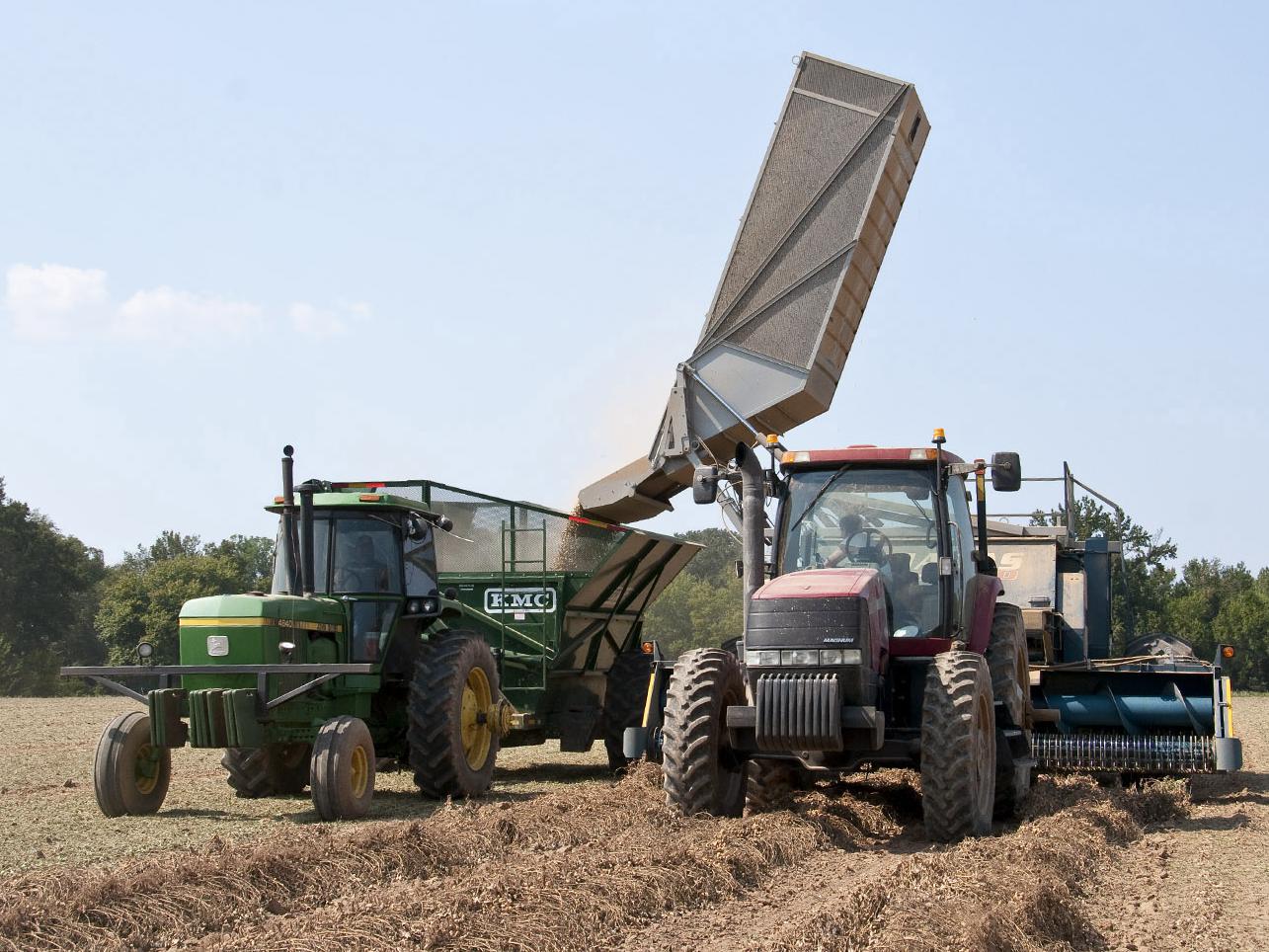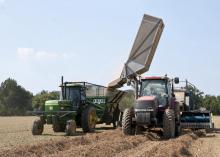Information Possibly Outdated
The information presented on this page was originally released on October 1, 2010. It may not be outdated, but please search our site for more current information. If you plan to quote or reference this information in a publication, please check with the Extension specialist or author before proceeding.
Outlook good for state's peanut crop
By Patti Drapala
MSU Ag Communications
MISSISSIPPI STATE – Demand for Mississippi peanuts could be up because of season-long production problems in Georgia and Alabama.
“Peanut crops in the central areas of Georgia and Alabama are hurting,” said Malcolm Broome, executive director of the Mississippi Peanut Growers Association. “If our farmers can get the crop out, they may see some price improvement because of the anticipated decreases in supply.”
Peanut prices are between $430 and $450 per ton, and the anticipated yield shortages from the Georgia and Alabama crop could push the price to more than $500 per ton.
Mississippi farmers increased their peanut planting to 25,000 acres this year, a 19 percent increase from 2009. Steady prices for peanuts and weak ones for cotton earlier in the year influenced many farmers to add peanut acreage. Since that time, cotton prices have recovered, and they could play a significant role in planting decisions next year.
About 60 percent of the state’s peanut crop is grown in southeastern Mississippi. The rest of the acreage is distributed among growing areas in the southwest, the Delta and the northeast.
Farmers in northeast Mississippi have been hit especially hard by dry weather this year.
“We missed a lot of late-season rain that would have helped our yields,” said Charlie Stokes, area agent with the Mississippi State University Extension Service in Aberdeen. “We really needed that rain in late August or early September to help the peanuts fill and mature.”
“It’s been hot and dry, which makes things really tough for us,” said Port Gibson farmer Lonnie Fortner. “I don’t know how this year will play out, but I am cautiously optimistic that I will have a good crop of peanuts to sell.”
In some areas of the state, clods caused by lack of moisture make harvesting difficult, as the diggers cannot reach the peanuts. The pressure the digger exerts to grind up the clods can break off the peanuts, keeping them trapped underground.
“I’ve seen clods as big as a bucket lid,” said Hamilton farmer Don Self, who is Mississippi’s representative on the National Peanut Board. “I have had to stop digging in a couple of fields, but I’m not ready to throw in the towel yet.”
With harvest just beginning, farmers must wait and see what yields and prices will be.
“There is always strong consumer demand for peanuts,” said Brian Atkins, facility manager for the Birdsong Peanuts buying point in Aberdeen. “Peanut butter sales are up, and sales for candy and other types of nuts are down. This makes peanuts a viable crop for many of our farmers.”
An average peanut yield in Mississippi is around 4,000 pounds per acre. Some farmers who were hard-hit with dry weather have seen yields in the 2,000 pound range, but others have dug as many as 5,500 pounds per acre.
“It’s still too early to tell what we’ll have,” said Poplarville-based Extension agronomist Mike Howell. “Unless we experience some unforeseen weather disaster, we are looking at an average crop for Mississippi, and we could also see better-than-average yields if we get a good rain.”
In the meantime, the peanut growers association has been helping farmers promote their product and working with MSU researchers and Extension specialists in establishing producer learning centers in Lucedale and Hamilton.
The centers are running trials to test varieties, fungicides, planting dates and tillage systems. Representatives from the U.S. Department of Agriculture’s National Peanut Laboratory are assisting educational efforts to improve peanut production in Mississippi.




